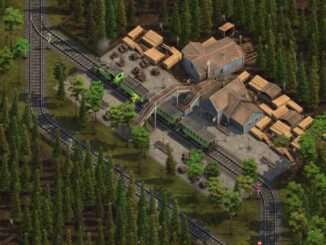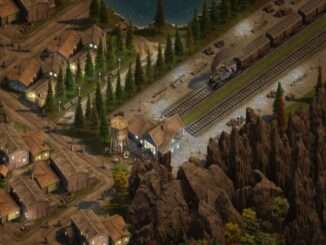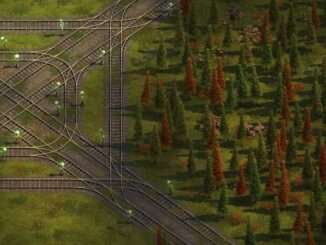
Table of Contents
Hide
Hints
Trains
- Trains operate slowly if they run out of fuel.
- If you do not have adequate signals, or change signal positions while a train is near-by you may get crashes.
- Though trains can carry multiple things, it is difficult to control this.
- If you don’t specify a particular commodity in the train route, a train may not carry the commodity you expect.
- You cannot control the route a train uses to get to a particular destination, so if you have two paths to a destination one of which will allow the train to get to the following destination and one which will not, the train may take the wrong path and get stopped when it reaches the first destination. The train may take different paths each time so it may work several times and then fail. You might be able to control this by creating a “dummy” station and requiring that the train pass through it.
- Cars beyond the length of a platform will not be processed.
- You can transfer trains to any terminal but they will not be able to get out, if they are two long for the terminal.
- You can have as many terminals as you want. Put one on each closed segment of track and start trains there for that track.
- Switching trains from one loop to another often leads to congestion. Keep trains on separate loops as much as possible. (you can drop off many things from one loop at a station in a town and pick them up at another station or by a train in another loop, if adequate storage is available.
- Trains take resources – beside coal or oil to operate.
Towns and Cities
- Towns can have as many industries, including farms, mines, sawmills, etc associated with them as you want.
- Towns can have as many train stations as will fit in their area.
- Industries and stations only need have one square overlapping a city limit. – Place them as far away from the town center as you can.
- As a city expands, its boundaries increase.
- You can move houses and industries around as much as you want. They will not lose workers. All resources used to create them are returned when they are destroyed – so they can effectively be moves without cost.
- When building a city, especially in sandbox mode where no resources are needed to create or maintain things, it is best to build things in a town slowly. Build a few houses and the necessary support (such as water, then markets, then churches, etc.). Run the game for a few seconds till the support facilities are completely staffed, then stop the game and add more houses and support. If you try to build a whole city at once, it may take several days to get to the same population as one taking a few minutes when built a little at a time.
- You get craftsmen when you get a town hall – you get town hall when you have 1500 100% happy laborers.
- Craftsman support must also be built up slowly.
- It appears as though, given the choice, workers will work at an industry rather than at a support function – such as fishing dock, water tower or market.
- Build ONE fishing dock, with its required storage and wait for it to become staffed. Then build another and wait again till you have 5 or 10 docks. If you build a city away from the water, you will have to ship fish to it to get it started. Towns do not work without fish.
- I usually try to put a potato farm, cotton farm and wheat farm, as they become available, attached to a city.
Storage
- One small storage will connect to 5 industries that require storage. It must be close by.
- A medium storage will not store the same things as a small storage – when it becomes available; but it WILL connect to 10 industries.
- Most in-city building require 2×2 or 3×2 squares. I usually set up a square road around the city limits 1 square in from the edge so I can build things along this road. Then I criss-cross the interior with roads with 4×4 areas between roads. If I have a railroad inside the city limits, I use bridges to cross it.
- When you move from a village to a town, upgrading to a town hall from a village hall by clicking on it and then clicking the upgrade arrow in the right-top of the box in the lower left of the screen.
- When you have a town hall, you get stone roads and craftsman industries and houses.
- Craftsmen use more resources.
- Craftsmen require bars which require beer which requires hops and a brewery both of which require craftsmen to operate.
- Ranches and dairy farms require craftsmen to operate.
- They also require wheat as does beer.
- Changing your roads to Stone, makes support facilities and storages to be effective for longer distance and also seems to extend the boundaries of the town.
- Changing from a village to a town also seems to extend the town’s boundaries.
- When city boundaries expand, extend your roads and put your farms farther out.
- Place industries away from the areas where workers have access to a station – like in the corners.
- DON’T put cities close together. You will get confused as to which roads belong to which city and possibly put building associated with one city on roads that belong to another and they will not function.
- Train stations can also be moved out as cities expand. Save your game before doing station and track moves. The program sometimes crashes when you do that and you must go back to the last save before the crash to get started again.
- If there are more than 5 resources in an area or multiple kinds of resources, I build a town rather than several stations.
- Watch that trains hauling workers are not carrying more workers than needed or the excess workers will just keep riding the train rather than working.
- NOTE that craftsmen will only ride in upgraded passenger cars. Use these cars as soon as they become available.
- ST30 trains are more efficient and faster.





Be the first to comment